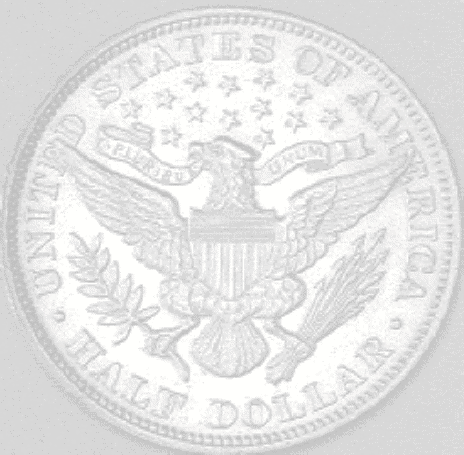
|
|
||
|
|
|
|
|
|
||

-10-
FOR BETTER OR WORSE:
Interest-Bearing Treasury Notes
The Act of July 17, 1861 authorizing the Demand
Notes, also authorized interest-bearing Treasury notes. For this reason,
they were commonly known as "Interest-Bearing Notes." They promised 7
3/10 percent annual interest --the highest rate the government had ever
paid. They could be redeemed in 3 years. Five detachable coupons were
used to collect interest at 6-month intervals. In order to collect the
final interest payment, the note itself had to be redeemed. One and two
year notes carrying 5 percent interest were authorized by the Act of
March 3, 1863. These were paid annually. By the Acts of June 30, 1864
and March 3, 1865, three year notes were again issued.
On account of the fact paper "money" is without
intrinsic value, the purported value of the currency fluctuated
according to the New York financial market, and the New York financial
market itself fluctuated according to the amount of paper "money" in
circulation. If the percentage charged for short-term loans was
increased from 6 to 7 percent, people panicked and lost confidence in
the professed value of the Treasury notes. When the percentage on loans
was decreased, the notes were in demand.
Still another problem plagued the notes: when interest
payments neared, the currency was hoarded; and then was again released
into circulation.
Secretary Chase vs. the Bankers
On August 5th, Congress passed an Act authorizing Secretary of Treasury Chase to deposit public money into "solvent specie-paying" banks. James Gallatin, President of the National Bank of New York reasoned with the Secretary.
Coin being the basis of credit, it is only in that way that the increased financial operations of the government can be conducted, for it is impossible to maintain the superstructure of credit when the basis is withdrawn, for in destroying the basis, the superstructure is also swept away.
Mr. Chase responded: "In what
funds will my drafts be paid?"
"We in New York are entirely willing to pay in coin,"
was the reply.
"But how will it be in Boston? How in
Philadelphia? How, if you in New York give a draft-holder a check on
Cincinnati, or St. Louis will the check be paid?" the Secretary asked.
"In whatever funds the holder of the draft or check is
willing to receive."
The Secretary of the Treasury responded, "That is to
say in coin if the holder insists on coin, and the bank is able and
willing to pay it, but in bank notes if he will consent to receive bank
notes. I cannot consent to this, gentlemen” (White, 150-51). Secretary
Chase subsequently withdrew 170,000,000 "dollars" in gold and scattered
it throughout the country by means of sub-treasuries. He would not allow
men to be robbed on account of their ignorance. He began well, what
hindered him? He left office with twice as much paper "money" as the
Treasury could redeem and when 35-40 cents could be used in a
transaction where a paper "dollar" was demanded (Spalding, 11).
"Thou shalt have a perfect and just weight. A perfect
and just measure shalt thou have."
